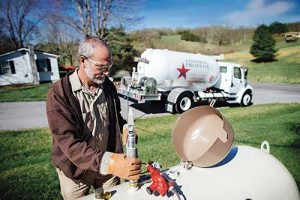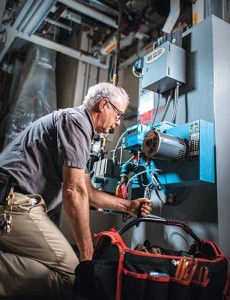Propane retailers share hiring, wage insights
Who pays employees best among U.S. retail propane companies? Do wages vary among retailers by operation type, size and region? What benefits do businesses typically offer?
These are among the many questions LP Gas sought to answer through an online retailer survey that was inspired by you, our readers. Retailers provided input on the wages and benefits they offer, sharing details about management salaries, non-management wages and more.
Retailers shared their 2016 hiring plans, as well as how their staffs changed in 2015. But before you dig into our wage and benefit report, it’s important to gain an understanding of the survey and build a mental profile of those who took it.
Methodology and retailer profile
LP Gas surveyed retailers online in January and garnered about 90 responses. The majority of retailers who took our survey represent independent companies. In fact, more than 80 percent of respondents identify themselves as independent retailers. Thirteen percent are farm co-op representatives, while 6 percent represent a master limited partnership (MLP).
Retailers of various sizes were surveyed, too. More than half sell between 1 and 5 million annual gallons of propane. About one-third sell less than 1 million gallons each year, and 17 percent sell more than 5 million gallons each year.
Regionally, the Midwest is best represented in the survey. More than 40 percent of respondents are located in the region. At least 20 percent are located in the East and South, respectively. Response from the West was lowest, representing about 12 percent of the total.
As you’ll see in the master table presented on page 54, average salary and wage data is provided for the majority of the breakdowns. In the spaces where no data is presented, data is either lacking or a job position is not applicable to a particular category (i.e., owners/farm co-ops). Also, LP Gas chose not to publish MLP data individually because of low response from that operation type.
We hope you find this data useful. Read on to find out how your propane company stacks up against others.
Management breakdown

The LP Gas wage and benefit survey is a tool for retailers to analyze their businesses. Photo: Propane Education & Research Council
One challenge LP Gas faced in developing the wage and benefit survey is that no two propane companies are seemingly alike in their management structure. Employees at an independent retailer, for example, ultimately answer to owners, while farmers collectively “own” the farm co-ops that sell propane.
Similarly, some retailers might not employ executives, vice presidents, general managers, area managers, regional managers, district managers, operations managers or people in other management positions. Or, perhaps, one management position is rolled up into multiple positions. Or, retailers call a management position something entirely different by name.
Regardless, LP Gas asked retailers to categorize their employees as best they could. The findings: Employees in five key management positions (owner, executive leadership, vice president/general manager, area/regional manager and district/operations manager) earn at least $75,000 on average. Owners and executive leaders of propane companies earn more than $100,000 on average. Independent owners earn $104,196 per year on average.
Management salaries largely fall in line with expectations beyond the owner and executive leadership level. Average salaries of vice presidents/general managers and area/regional managers are close to the six-figure range. Based on the data, farm co-op vice presidents and general managers are already making six-figure annual salaries, with an average of $116,400.
Although data shows employees in vice president and general manager roles make more money, on average, working for a farm co-op than an independent, independents offer 19 percent better pay to area/regional managers than farm co-ops and 9 percent better pay to district/operations managers.
Farm co-ops offer better average compensation to service managers, sales managers and office managers, though.
LP Gas was also curious to learn how salaries compare by company size. We separated retailers into three categories (less than 1 million annual gallons, 1 million to 5 million, and more than 5 million) and confirmed that bigger companies offer better management salaries on average. The only anomaly we found in management is the district/operations manager position. The data shows those in that position with a company in the 1- to 5-million-annual-gallon range average 8 percent more pay than those in the same position at companies selling more than 5 million annual gallons.
The regional breakdown of management positions offers some interesting takeaways, as well. For example, owners in the Midwest earn almost 20 percent less on average each year than owners in the South. Also, district and operations managers in the East and South make more on average than those in the same position in the Midwest and West. The East pays service managers best, followed in order by the West, Midwest and South. Office managers have comparable salaries across regions.
Non-management breakdown
| MANAGEMENT All retailers (MLPs, independents, farm co-ops |
NON-MANAGEMENT All retailers (MLPs, independents, farm co-ops) |
|
| 401(K) | 96.5% | 93.1% |
| Pension | 95.2% | 95.2% |
| Bonus | 89.3% | 89.3% |
| Health | 96.3% | 92.6% |
| Dental | 97.8% | 97.8% |
| Life | 98.1% | 90.6% |
| Sick days | 91.4% | 95.7% |
| Disability | 95.5% | 95.5% |
| Vacation | 89.8% | 96.6% |
| Paid holidays | 89.5% | 95.4% |
On the non-management side, LP Gas found that the best average hourly wages are paid to tanker/transport drivers ($21.18). Service technicians ($19.26) and sales representatives ($19.25) get the next-best average hourly wages, followed by delivery drivers ($17.98), customer service reps ($15.26) and administrative personnel/secretaries ($14.60). General laborers make $12.68 per hour on average.
Another takeaway: On average, independents pay customer service reps, delivery drivers and service techs better than farm co-ops. Farm co-ops, however, offer better average hourly wages to administrative personnel and secretaries ($15.43) than independents ($14.14). Farm co-ops also pay general laborers more than a dollar per hour more on average than independent retailers.
Unlike management, company size isn’t necessarily an indicator of greater pay on the non-management level. Although administrative personnel, secretaries and general laborers make more on average at larger propane companies, wages largely vary based on company size for other positions.
For example, the data shows service techs make less on average at companies selling more than 5 million annual gallons than those selling less than 5 million. On the other hand, sales reps and delivery drivers average the highest hourly wages at companies selling more than 5 million annual gallons.
Regionally, retailers in the East pay non-management positions best based on the data LP Gas collected. Delivery drivers, service techs, administrative personnel, secretaries and general laborers receive the best average wages in the East. Yet, Midwest sales reps make significantly more on average than those in the East and South, and South tanker/transport drivers average more than those in the East and Midwest. The best average hourly wages among customer service reps are had in the West ($16.21).
Benefits

Retailers in the East tend to pay non-management positions best based on
LP Gas’ wage survey. Photo: Propane Education & Research Council
A good-paying wage isn’t the only expectation employees have of their employer these days. Often, benefits are expected to entice prospects into work.
“In order to maintain a trained and superior group of personnel both in the office and the field, we have to offer top benefits and pay,” says an independent retailer in the East.
The costs absorbed to provide these benefits can be difficult to bear, propane retailers say. But the overwhelming majority provides a variety of benefits to employees.
LP Gas asked specifically about 10 benefits: 401(K), pensions, bonuses, health insurance, dental insurance, life insurance, sick days, disability, vacation days and paid holidays. On the management level, life insurance (98 percent) is the most-offered benefit, while bonuses (89 percent) are the least offered. On the non-management level, dental insurance (98 percent) is the most-offered benefit, while bonuses (89 percent) are again the least offered.
Some propane retailers get creative in the benefits they offer, too.
“We provide a floating day that employees can take and a wellness incentive credited toward medical,” says an independent retailer in the South.
Although retailers offer benefits at high rates, offering a good benefits package isn’t easy.
“We are having a really hard time filling a position for a delivery driver/service tech,” says an independent retailer in the South. “We are so small and unable to offer benefits, which is hurting us in hiring.”
Several retailers tell us that providing health insurance to employees is an ongoing challenge.
“Our biggest hurdle is the cost of health insurance,” says another independent retailer in the South. “We are regrettably unable to offer it due to its cost. [As] the owner, I had to work a part-time position to offer health insurance to our family. That position is now gone, and we have had to enroll in Healthcare.gov. Our premiums went up, the deductible is $7,000, and we have limited choices on physicians. We want to be good employers and offer good benefits and wages to our employees, which are like family.”
Adds another independent retailer in the South: “Because we reluctantly discontinued our group health plan a couple of years ago due to the prohibitive cost, we are trying to boost hourly rates a bit to compensate for that. We have recognized that we may have lagged a bit on pay rates – we’re in a high unemployment area – so we are also attempting to raise our scales a bit to make sure we are doing right by our people.”
In addition, LP Gas asked retailers about their 2015 staffs and their 2016 hiring plans. Based on the data, 41 percent added staff last year, while 58 percent kept their staff the same. Only 1 percent reduced staff in 2015.
A number of retailers plan to add staff in 2016, as well, yet at a lesser rate (31 percent). Most retailers (62 percent) plan to keep their staffs the same size. Five percent aren’t sure about their 2016 staffing plans.
“If the weather continues warmer than normal, we will have to reduce staff,” says one independent retailer in the East.
Takeaways
LP Gas’ goal in publishing this wage and benefit data is to provide benchmarks by which propane retailers can measure their businesses.
We’re not trying to crash retailer worlds by providing a realization that your business offers lower-than-average or higher-than-average wages. The data is simply meant to inform.
We hope to build on this data in the coming years, too, engaging additional propane retailers with our survey and showing wage and benefits trends as they develop.


















Some drivers &service people work very hard & give all to give the company a very good name.